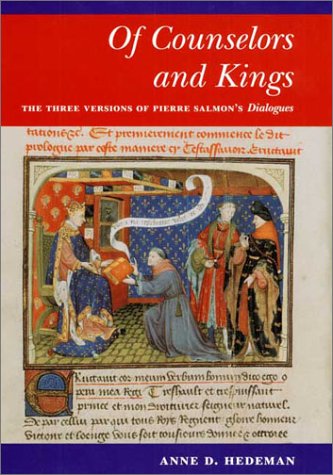Illinois Medieval Studies
1 total work
Pierre Salmon served as royal secretary to Charles VI of France at a time when papal schism plagued the church, civil war divided the country, and the king suffered from an intermittent but incapacitating psychosis. In an effort to find a cure for the king's illness, stabilize the turbulent political situation, and secure his own future, Salmon supervised the production of two distinct versions of the beautifully illuminated guidebooks to good kingship known as his "Dialogues". Where much previous scholarship has relied on an abridged edition of the "Dialogues", Anne D. Hedeman returns to the complete, original manuscripts to present a fresh view of Salmon's purposes. She suggests that whereas the first version (1409) held out hope for the king's eventual complete recovery and accordingly counseled him on ruling wisely, the second version (1412-15) reflected a changed political situation: the French civil war had erupted, the compromise pope had died, and efforts to find a cure for the king had failed.
In this second version, Hedeman argues, Salmon shifted his attention to include the future governors of France, especially the heir, Louis of Guyenne, who took on an increased role in the government of the realm during his father's attacks of madness. Hedeman shows how Salmon manipulated artistic style and iconography to construct a visual narrative that often was quite independent of its text. She also suggests how changes to the images in Franois de Rochechouart's copy of the manuscript (ca. 1500) signal efforts to appropriate Salmon's stature as a trusted royal advisor for later political purposes. Richly illustrated with plates from the original manuscripts, "Of Counselors and Kings" is a treat to the eye as well as to the intellect.
In this second version, Hedeman argues, Salmon shifted his attention to include the future governors of France, especially the heir, Louis of Guyenne, who took on an increased role in the government of the realm during his father's attacks of madness. Hedeman shows how Salmon manipulated artistic style and iconography to construct a visual narrative that often was quite independent of its text. She also suggests how changes to the images in Franois de Rochechouart's copy of the manuscript (ca. 1500) signal efforts to appropriate Salmon's stature as a trusted royal advisor for later political purposes. Richly illustrated with plates from the original manuscripts, "Of Counselors and Kings" is a treat to the eye as well as to the intellect.
